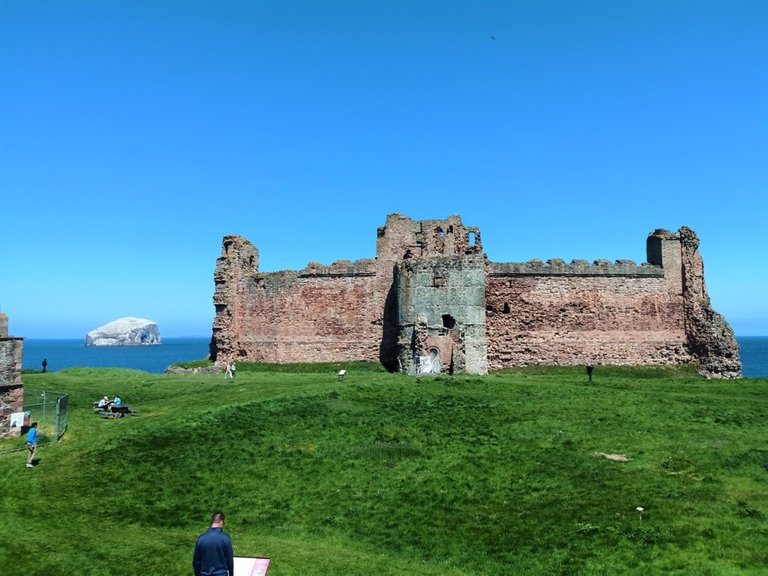Last week I took my daughter and her friend to visit Tantallon Castle, to the east of Edinburgh in Scotland.
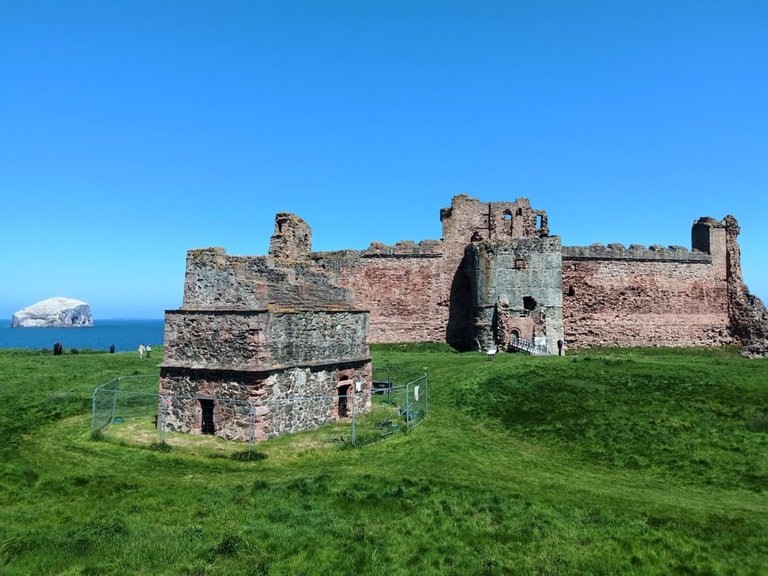
Its quite an interesting construction, and has a huge curtain (defensive) wall that spans over an area of headland which is naturally protected by cliffs on the other threes sides.
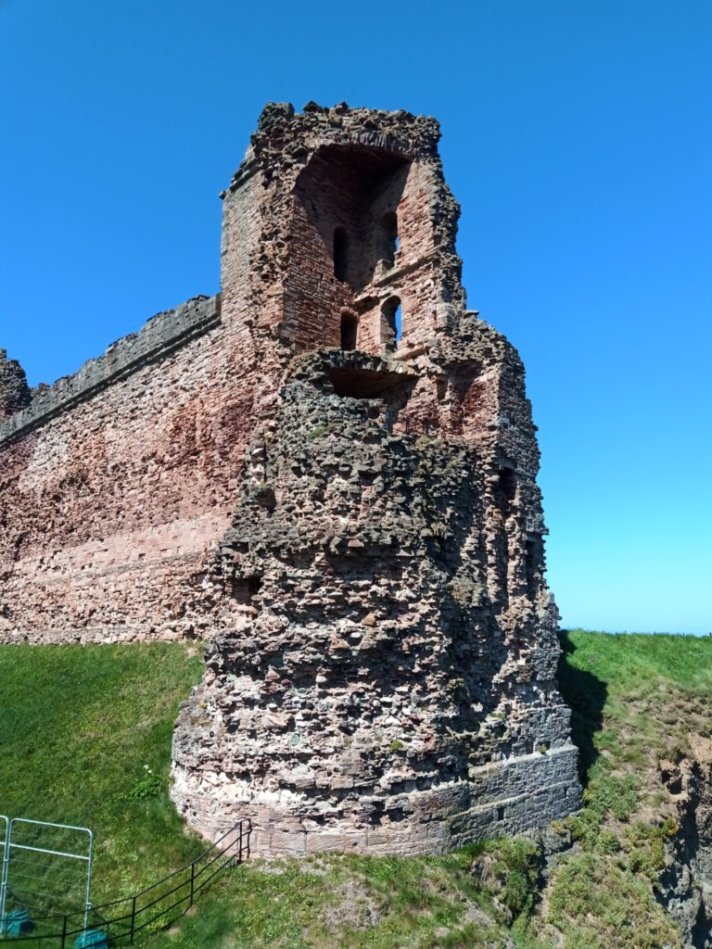
Thats well illustrated above - you can see its quite thick and high, and then to the right there was no need to build any further as the cliffs on that side did the job instead - it would have made making the castle a lot easier as only one main wall needed to be built.
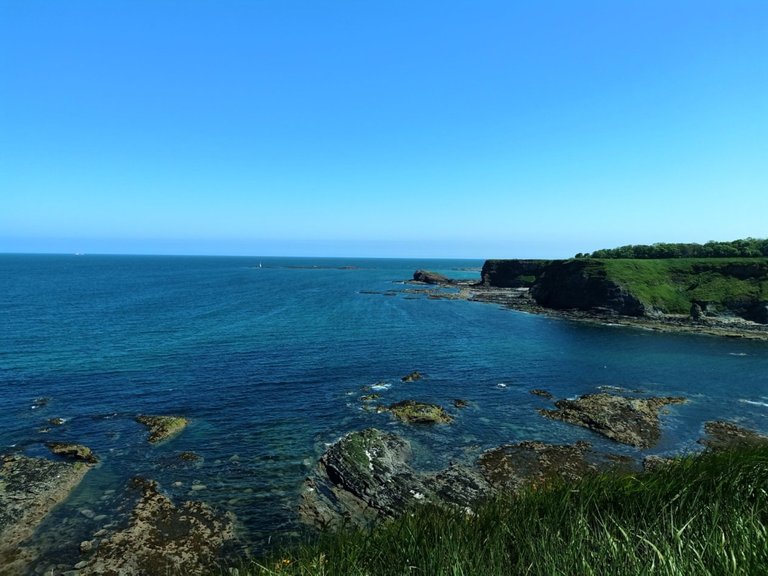
Thats the view from the cliff tops on that same side. As can be seen it was a lovely day and the colour of the sea was pretty awesome.
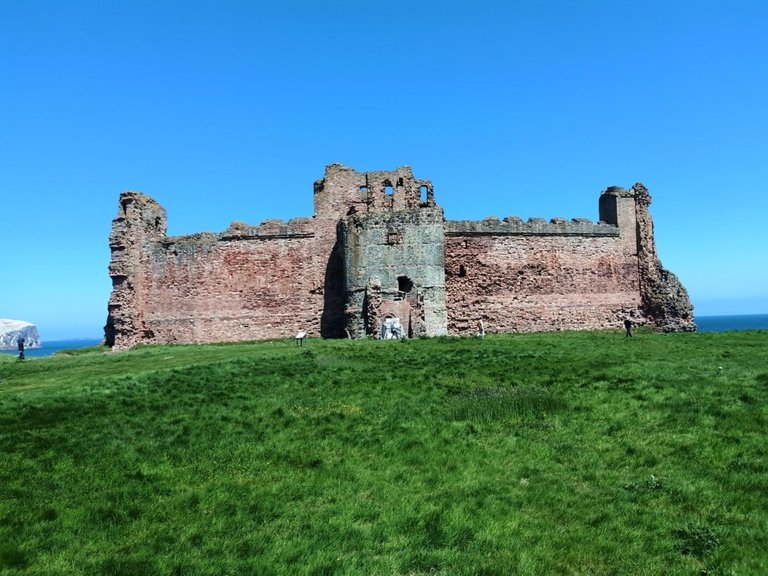
You can normally go inside the castle and up on the walls but it was actually closed - they were carrying out masonry repairs on the walls, so that was a bit of a shame, we only had access to the grounds on the outside.
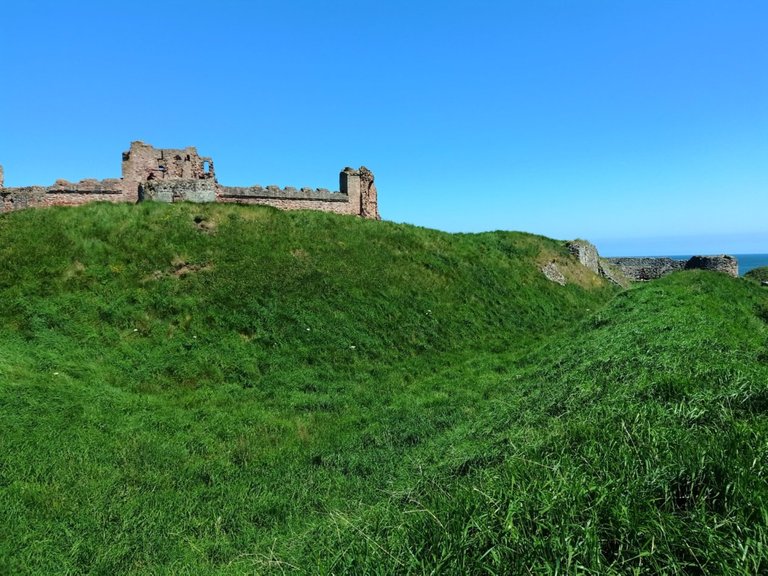
This castle was clearly there for defensive purposes as it also had a series of outer ditches before you got to the castle itself.
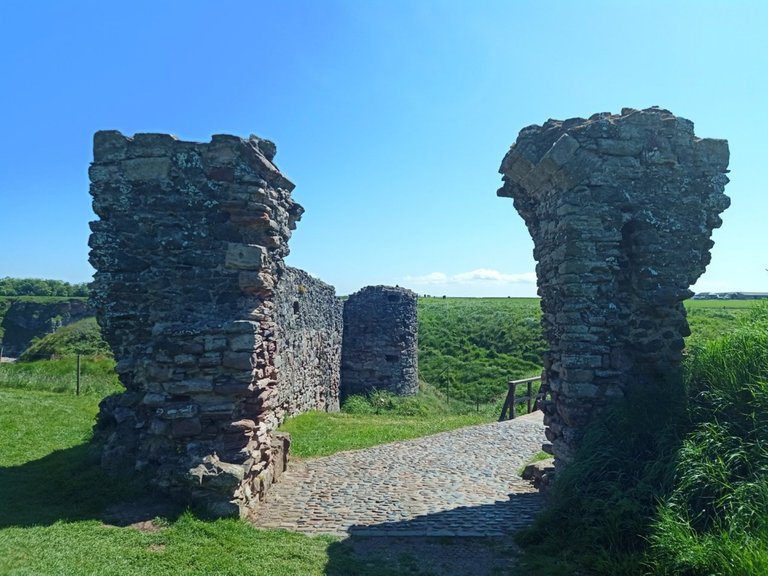
There was also this outer gate at the end of the ditches and between the cliff.s It was designed to funnel in the raiders and trap them in a kill zone.

Above is the fortifications adjacent to that kill zone. Those holes were for the defenders to shoot through with muskets. So it really did have a well designed set of defenses that would have to be taken in turn, including the final wall itself.

The pic above on the other corner of the wall shows just how high it is with a clear 6 floors at this side - so pretty high for something built around 700 years ago. The height would have given the defenders a huge advantage to any sieging army that got close to the walls.

Above is the huge main gate to the wall. The castle actually saw quite a lot of action, with a siege from Oliver Cormwell's army in 1651 being particularly interesting. A band of 91 men had been attacking Cromwell's army, and hey lay siege to them in the castle. The 91 men held out for 12 days before Comwell's cannons and army of 2000+ men made a hole in one of the towers. The men were granted freedom due to their bravery - that is pretty epic and shows how effective the defenses were for 91 men to hold out against that many. However gunpowder was the game changer for such warfare and clearly the cannons did do their job. Prior to cannons, the castle would have been pretty impregnable.
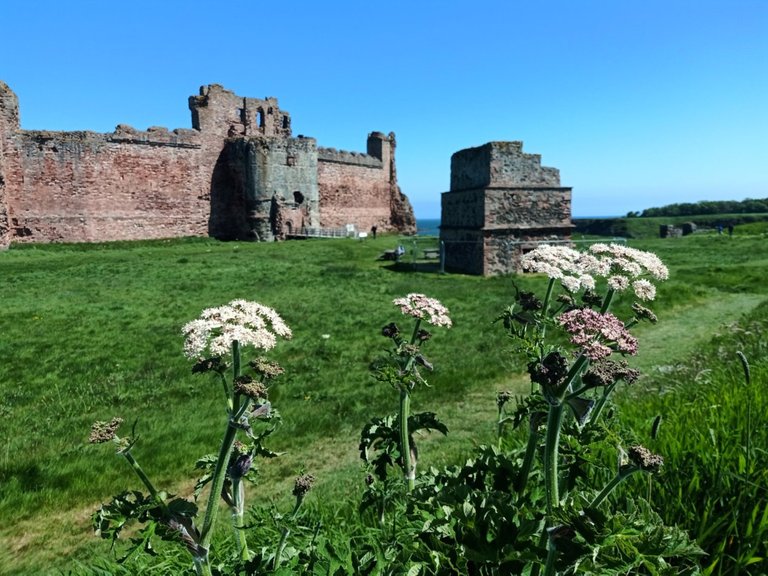
The outer building you can see above is a Doocot. In Scotland, doo is another word for pigeon. So it was a pigeon loft used for breeding the pigeons to provide a local source of fresh meat for the inhabitants. Doocots were quite popular during these times for exactly that reason, and old examples like this one can be found all over the UK.

Above is a view out to sea (the North Sea) on the west side of the wall. Thats the Bass Rock out in the sea which is quite famous for its white colour. It is home to a huge number of seagulls, ganets in particular, and the white colour is from their poo ! The rock is completely covered in it !!! Its quite visible from quite far (even from some of the higher points in Edinburgh which is about 20+ miles away).
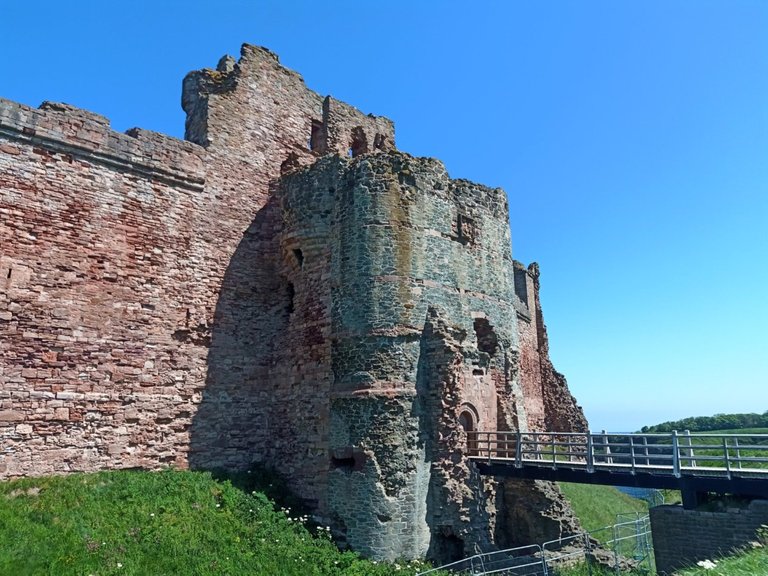
Thats another view of that huge main gate, and you can clearly see the ditch immediately in front of the castle in this pic (above) - adding to the defenses.
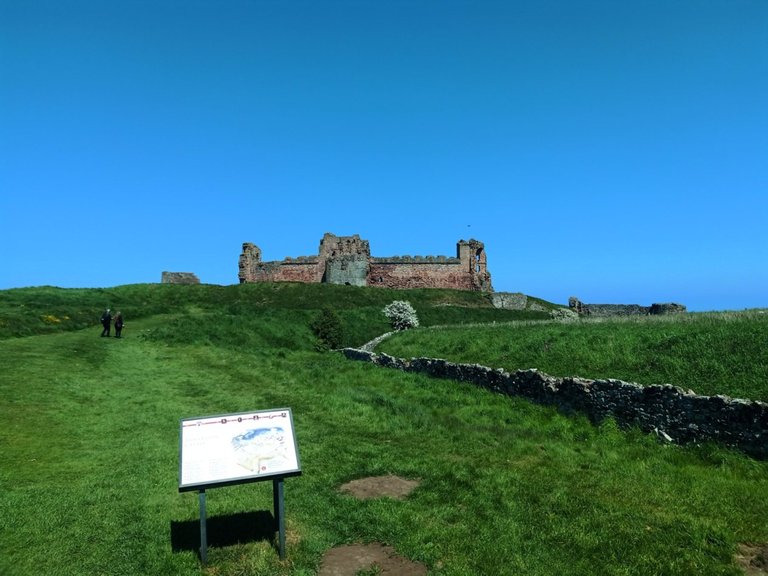
Its a pity we never got inside to climb up on the walls, but we will go back again at some point after it has re-opened !
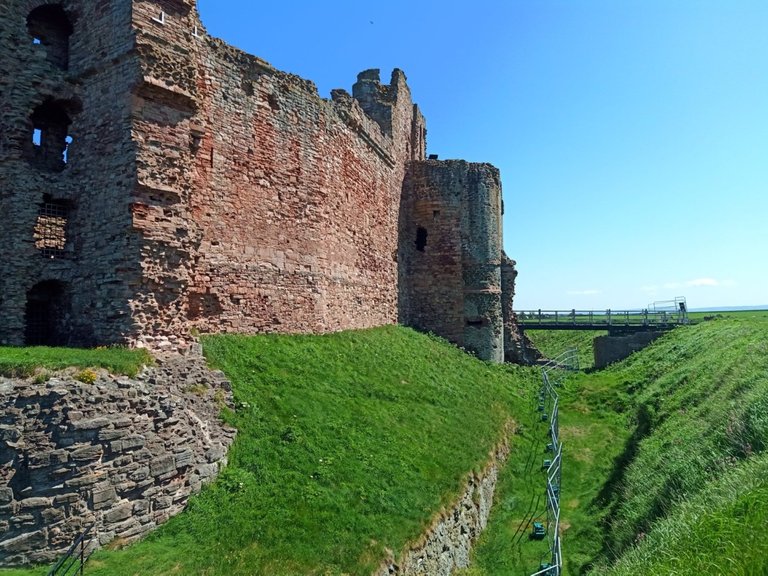
I love the red sandstone colour of this castle - it really is pretty. I'm assuming its red sandstone, which is quite abundant in Scotland, although quite surprising, because its quite a soft rock. I guess when built pre-cannon, that would not have been much of a consideration, but the cannons would have been pretty effective against it.
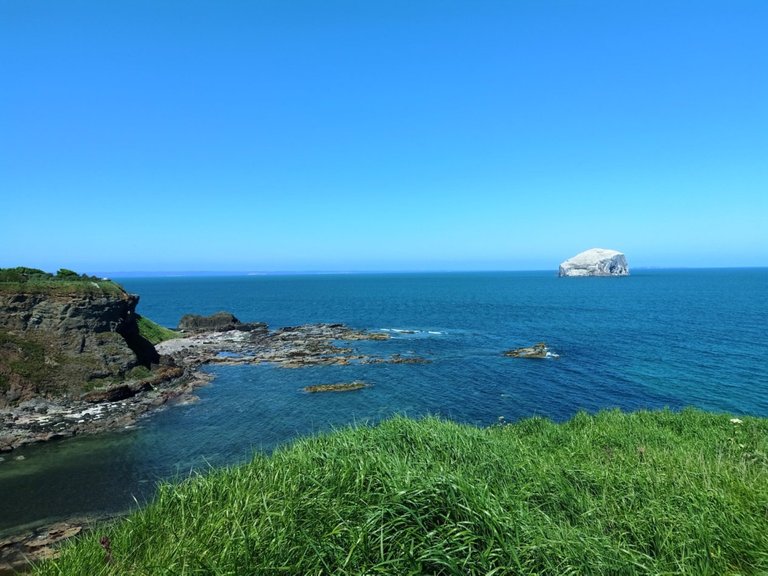
Well we enjoyed my visit. I think its the third time I've been in over the course of about 20 years ! The views were stunning due to the lovely weather ! Another day, another castle !
